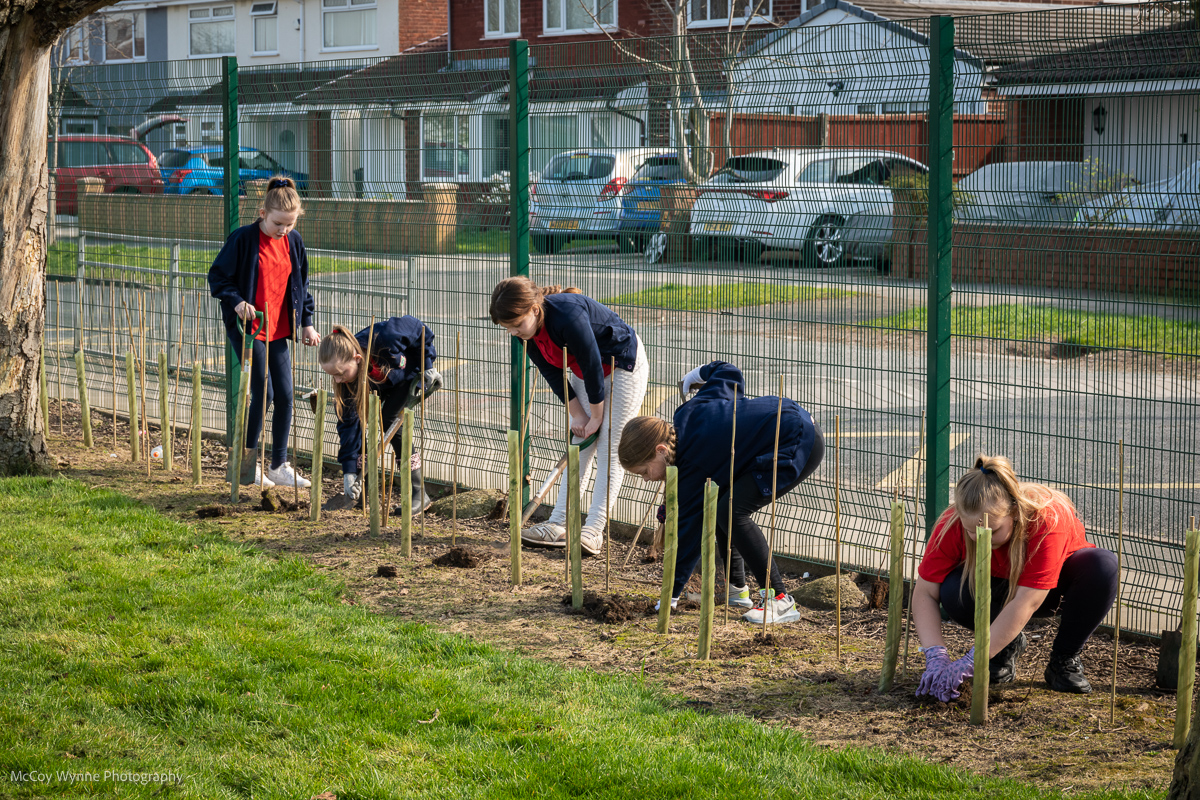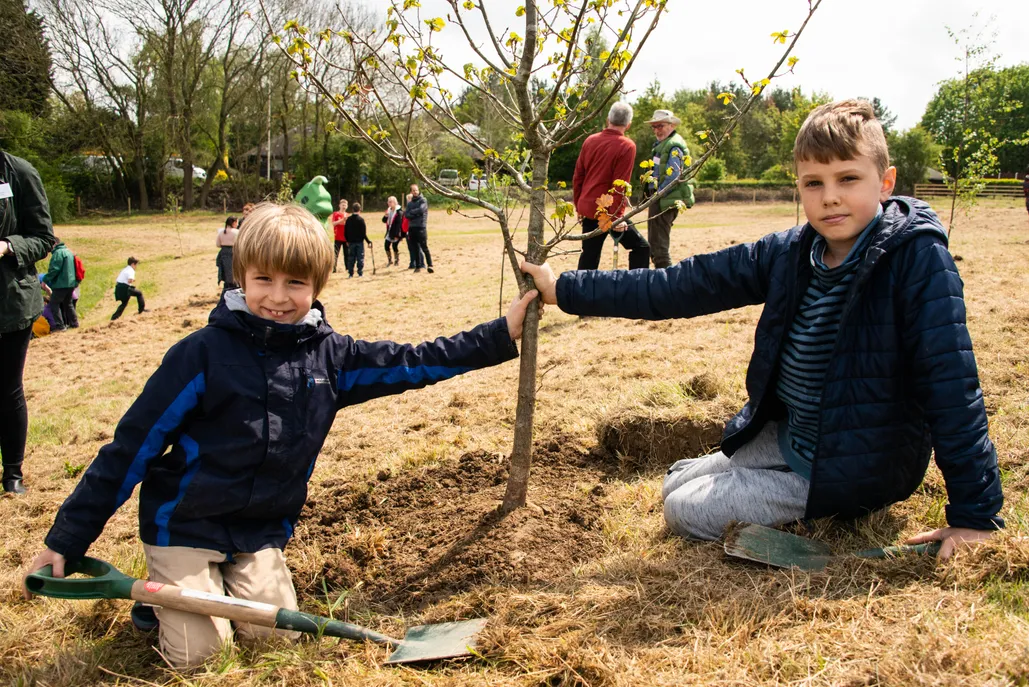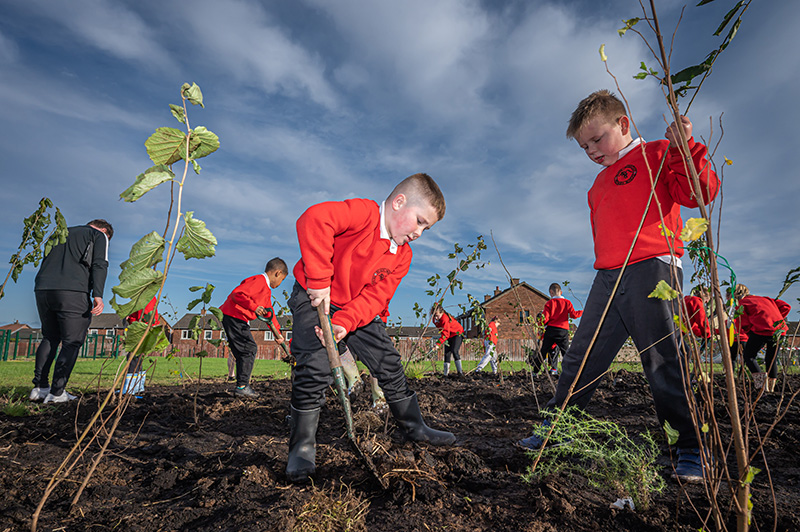The Comprehensive Benefits of Tree Planting
Introduction
Tree planting has long been celebrated for its environmental and aesthetic contributions, but its significance in today’s world goes far beyond that. As we face escalating challenges like climate change, urbanization, and the loss of biodiversity, tree planting emerges as a simple yet profoundly impactful solution. Whether you’re an environmental enthusiast or just someone who appreciates a shady spot on a hot day, understanding the full scope of tree planting benefits can inspire action. In this article, we’ll delve into the environmental, economic, social, and climate resilience benefits of tree planting, highlighting why it’s more crucial than ever.
Environmental Benefits of Tree Planting
Reduction of Carbon Dioxide (CO2)One of the most significant environmental benefits of tree planting is the reduction of carbon dioxide in the atmosphere. Trees act as natural carbon sinks, absorbing CO2—a major greenhouse gas—during photosynthesis and storing it in their biomass. This process helps mitigate the effects of global warming and climate change, making trees an essential tool in our efforts to curb rising global temperatures.

Improvement of Air Quality
Trees are essential for enhancing the quality of the air we breathe. They filter pollutants like sulfur dioxide, ammonia, and nitrogen oxides from the air, trapping particulate matter on their leaves and bark. This natural filtration system significantly reduces smog, which is linked to respiratory problems and other health issues. The presence of trees in urban areas can lead to cleaner, healthier air for residents, contributing to overall public health.
Water Conservation
Water conservation is another key environmental benefit of tree planting. Trees help reduce water runoff by intercepting rainfall with their leaves and branches, allowing more water to seep into the ground and replenish groundwater supplies. Their root systems also help prevent erosion, stabilize the soil, and maintain the water cycle. This is especially important in areas prone to drought, where trees can help conserve precious water resources.
Soil Erosion Prevention
Trees are nature’s way of protecting the soil. Their roots anchor the soil, preventing erosion caused by wind and water. This is particularly important in hilly or mountainous regions where soil erosion can lead to landslides and the loss of fertile land. By planting trees, we help preserve the integrity of the soil, ensuring that it remains productive for agriculture and other uses.
Support for Biodiversity
Trees are crucial for supporting biodiversity. They provide habitats for a wide range of species, from insects and birds to mammals and fungi. By planting trees, we create ecosystems that support diverse life forms, helping to maintain ecological balance. In areas where deforestation has occurred, replanting trees can restore habitats and bring back species that were once lost.

Economic Benefits of Tree Planting
Boosting Property Values
Trees can significantly boost property values. The aesthetic appeal of tree-lined streets and well-landscaped yards is undeniable, often leading to higher real estate prices. Studies have shown that homes with mature trees can sell for up to 15% more than those without. Trees not only enhance the beauty of a property but also create a sense of tranquility and well-being that is attractive to buyers.
Job Creation
Tree planting also contributes to job creation. The process of planting, maintaining, and managing trees generates employment opportunities in various sectors, including urban forestry, landscaping, and environmental conservation. These jobs are vital for the economy, providing livelihoods while also contributing to the health of our planet.
Reduction of Energy Costs
Trees can help reduce energy costs by acting as natural insulators. In the summer, they provide shade that cools buildings, reducing the need for air conditioning. In the winter, they act as windbreaks, reducing heating costs by protecting homes from cold winds. The strategic planting of trees around homes and buildings can lead to significant energy savings, lowering utility bills for homeowners.
Agricultural Benefits
In agriculture, trees offer numerous benefits. When integrated into agroforestry systems, trees can improve soil fertility, increase crop yields, and provide shade for livestock. They also play a role in protecting crops from pests and diseases, reducing the need for chemical pesticides. By incorporating trees into farming practices, farmers can enhance the sustainability and productivity of their operations.
Social Benefits of Tree Planting
Enhanced Mental Health and Well-being
The social benefits of tree planting extend to mental health and well-being. Numerous studies have shown that spending time in nature, surrounded by trees, can reduce stress, anxiety, and depression. Green spaces offer a respite from the hustle and bustle of urban life, providing a peaceful environment where people can relax, exercise, and connect with nature.
Community Building
Tree planting is also a powerful tool for community building. When people come together to plant trees, they form bonds and develop a sense of shared purpose. These activities foster a sense of community pride and ownership, leading to stronger, more connected neighborhoods. Additionally, green spaces created through tree planting provide places for social interaction, further strengthening community ties.
Educational Opportunities
Tree planting offers valuable educational opportunities, especially for children and young adults. Schools and community organizations often use tree planting projects to teach about ecology, environmental stewardship, and the importance of sustainability.
Improvement of Urban Aesthetics
Urban areas can greatly benefit from tree planting, which enhances their aesthetic appeal. Trees soften the harsh lines of buildings and concrete, adding natural beauty to cityscapes. They also create inviting spaces for recreation, such as parks and green belts, where residents can enjoy outdoor activities. The presence of trees makes cities more livable and attractive, improving the quality of life for urban dwellers.

Storm water Management
Trees are essential for effective storm water management. Their roots absorb and filter rainwater, reducing the volume of runoff and decreasing the risk of flooding in urban areas. This natural water management system is particularly valuable in cities with aging or insufficient infrastructure, where trees can help prevent costly damage from heavy rains and storms.
